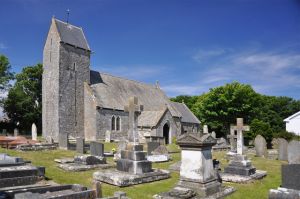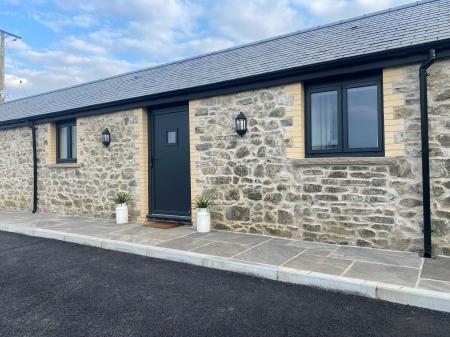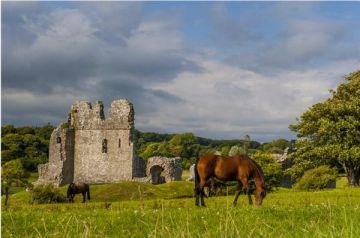
The church of St James began as a chapel but soon after it was built in the 12th century it was granted to the nearby priory at Ewenny. One condition was attached to the grant; that 3 weekly services be held.
The oldest parts of the building are the chancel arch, the south doorway, and a chancel window, all dating to the original 12th century building. The most striking exterior feature, however, is the tall, slender, saddleback tower at the west end of the nave.
One of the historic highlights is a stone mensa table, or altar. Squints in the nave wall gave a view of the table to worshippers. On either side of the altar are niches that would originally have held statues of the Virgin Mary and St James. In the south wall is a narrow round-headed lancet window of 12th century date.
There is a Norman tub font with rope moulding near the rim. On the north chancel wall is a memorial to Frances Hewett (d. 1828). In typical 19th century style it depicts a woman leaning against a classical urn of alabaster, set against a black background. Over the pulpit is an 18th century memorial to the Lloyd family.
The church was heavily restored in the Victorian period by John Pritchard, the diocesan architect. The tower and chancel were repaired, the nave walls almost completely rebuilt, and a porch and vestry were added. The total cost for all the work being a meagre 900 pounds.
St James the Great is an attractive church, with several very good Norman features.
 We've 'tagged' this attraction information to help you find related historic attractions and learn more about major time periods mentioned.
We've 'tagged' this attraction information to help you find related historic attractions and learn more about major time periods mentioned.


